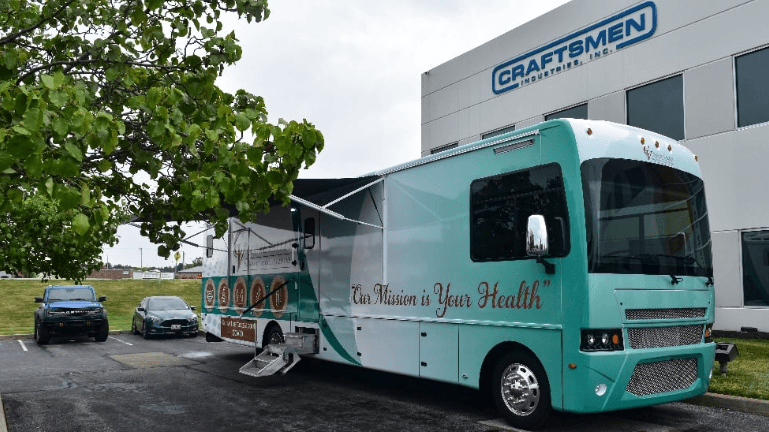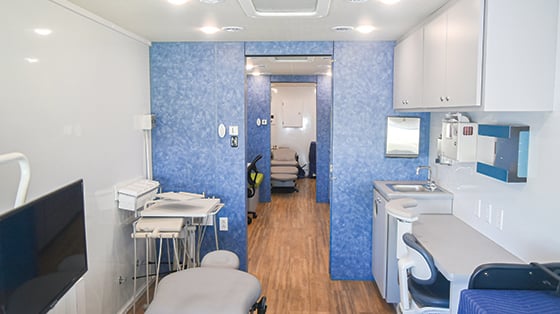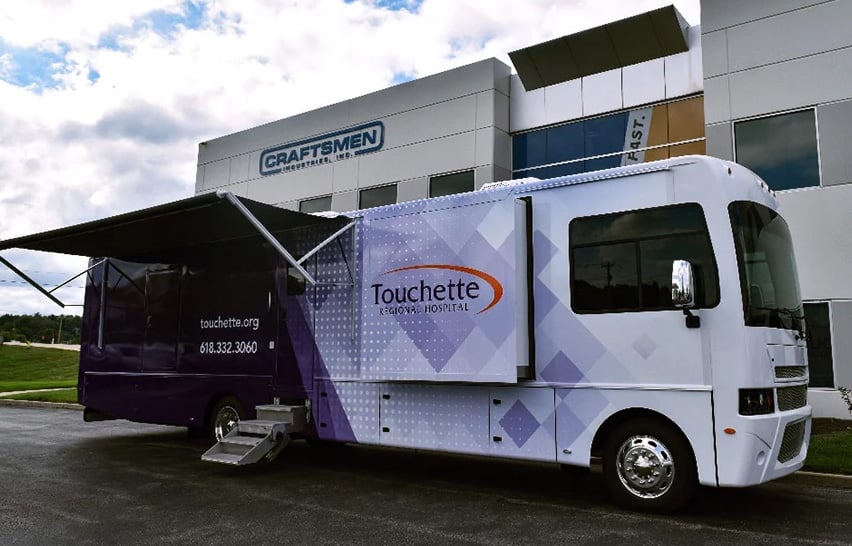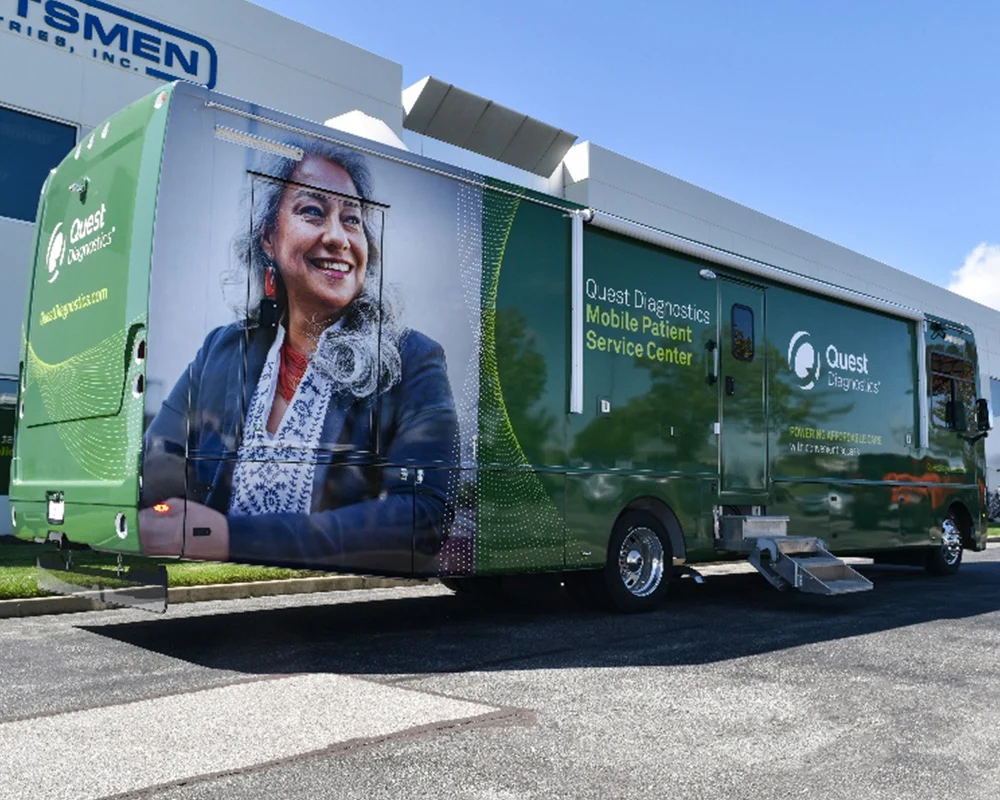Medical Coach vs. Medical Bus
In recent years, U.S. healthcare has significantly improved with the introduction of mobile clinics. Thanks to mobile services, medical personnel can...

Are you looking for a cost-effective patient transfer solution for your healthcare organization? Many people can benefit from accessible medical treatment for their needs. Thus, let’s learn what the dissimilarities are between medical coach vs. ambulance.
This article will explore how a medical coach is different from an ambulance regarding emergency assistance, cost, and laws for using each option. With our help, you will hopefully decide which service is right for your organization.
The popularity of mobile medical coaches is significantly growing by the day due to the fact that these types of vehicles offer services to people living in rural or unreachable communities. Thanks to mobile medical coaches, healthcare organizations can provide quality medical care to various communities in need.
Sometimes, people who need medical assistance can’t get it simply because they are in an underserved location. By examining the ways a medical coach vs. ambulance works, you will discover how this transport option can free hospitals and clinics from overcrowding and help those in need.

Source: craftsmenind.com
Medical coaches are designed to serve more patients who can’t find a free space in an ambulance or don’t have access to it. Also, by using medical coaches, the staff at ambulances and hospitals can have less pressure and focus on more complicated cases.
While EMS services are most common for ambulances and emergencies, mobile medical coaches are often used during natural disasters, epidemics, and similar types of crises. Thus, ambulances are your best choice if you need emergency medical care.
But for a non-emergency patient looking for primary care, dental services medical coaches can be a better option. Mobile coach services include blood collection, dental care, mammography, MRI, and mobile training for healthcare workers.
Patient safety is the most important thing to remember when comparing a medical coach vs. ambulance. If a patient is unstable or is in a health-risk situation, you might need an ambulance, as there are no life support devices in a medical coach to offer care during the most critical times. Thus, a mobile medical coach cannot be used as an ambulance.
Mobile medical coaches are vehicles equipped with standard medical equipment such as PET, MRI, CT, and X-ray machines. Some healthcare coaches can have stretcher securements, medical supplies, storage, and power.
An ambulance has more sophisticated medical equipment than a medical coach. It includes life support devices for patients in urgent need of medical intervention. An ambulance also has lights and sirens, unlike medical coaches.
Building an ambulance can be costly because it requires several components to be completed. An ambulance with all the features and components can cost approximately $300,000. But, some ambulances are more expensive depending on the equipment that will be used to help patients.
The cost of mobile medical coaches depends on several factors. The price range is determined by how often the vehicle needs to be maintained and obtained, as well as the type of equipment that will be installed in it.
We all know what an ambulance looks like. However, the design of the medical coach can be completely custom-made to look unique and different from the others. Thus, the construction requirements and needed modifications will determine the price for a mobile medical coach. On average, they cost from $100,000- $500,000.
Mobility and location convenience is the most important benefit of a medical coach. Healthcare professionals can attend to children and adults living in remote areas by the use of mobile medical coaches. Thus, they can act quickly in need of a sudden medical problem.
The cost of building a medical coach can also be less expensive than an ambulance. Not every healthcare organization has the funds to purchase costly medical equipment. If you have a limited budget, you may prefer to have the basic equipment, with the possibility of traveling to different locations and attending to people who need help the most.
In addition to being a more cost-effective option, medical coaches also take less time to build than ambulances. For example, installing and building an ambulance may last for over a year, whereas medical coaches can be built and ready for use in a few months.
Regarding ambulances, they include emergency kits and life-saving equipment to deal with critical situations like car accidents, heart attacks, and paralysis attacks.
Ambulances don’t have the mobility of medical coaches to serve specific geographic regions. Ambulances can only transport patients to the nearest hospital or healthcare facility.
Another occurring drawback of ambulances is connected to new staff training. Some trainees have reported that the ambulance services don’t always do a quick job of preparing them to use the equipment properly, deal with the call volume, and reach patients in time.
But, the use of medical coaches also comes with certain drawbacks. For example, they don’t include the advanced medical equipment like ambulances have. It also doesn’t offer emergency care like EMS services that patients might need at the moment.
Providing legal and safe care with an ambulance requires following specific rules and regulations. For an ambulance to operate legally, you need lights, sirens, power requirements, first aid, suction equipment, and O2.
However, the regulations for operating an ambulance can vary depending on the location. Thus, check the requirements of your region and consult healthcare experts to discover what rules you might need to follow.
For example, ambulances in certain areas are required to follow certain national standards for fire protection, undergoing several tests about patient structural integrity and obtaining a specialized license.
But, operating a mobile medical coach is less time-consuming and complicated. You don’t need any license for the vehicle because there are no requirements regarding specialized equipment or emergency care with these types of services.

Source: craftsmenind.com
You came to this article wanting to learn the differences between a medical coach vs. ambulance. But we can also help you try to figure out which option is best for your organization, depending on your budget, equipment, and licensing.
Looking for ways to treat patients who need help in emergency medical situations? Choose an ambulance. Do you want to offer door-to-door services to patients who don’t have access to medical care? A medical coach is your best bet.
But you must remember that the rapid mobilization of a medical coach doesn’t replace the critical care equipment ambulances have on board. Ambulances also operate 24/7 and have assisted many people by providing emergency medical treatment and transfer to a hospital.
The staff working as mobile medical coaches can also offer urgent care without the need to transfer the patients to emergency rooms and cause traffic. For example, medical coaches are here to offer mobile assistance and medical help if a worker gets injured on a remote job site.
The reason why more organizations are keen on medical coaches instead of ambulances has a lot to do with the long wait times. The EMS are usually understaffed and unable to treat all patients quickly. But mobile coaches are just a call away and an easy alternative for patients who don’t need an ambulance.
Studies show that the male population and ethnic minority community members use medical coaches and ambulance services the most. Older people also have a high tendency to call for medical help using these services in comparison to other age groups.
Building medical coaches involves detailed plan development. You must determine which equipment will be needed during the process, which style of vehicle will be created, and how often it will be used to deliver medical care to certain locations. Examining these aspects, you can determine how long the construction process will take.
The design of mobile coaches can be customized to primary care, dental, diagnostics, and COVID testing. Discovering a reputable service provider like CrafstmenInd is crucial to ensure your mobile medical vehicle is made from high-quality materials and last long, regardless of how often they’re used.
We hope we helped you learn the contrasting aspects of medical coach vs. ambulance.
Mobile coach services work closely with local communities and offer medical assistance during the most crucial times. This practice promotes health awareness and prevents health problems from causing more serious consequences.

In recent years, U.S. healthcare has significantly improved with the introduction of mobile clinics. Thanks to mobile services, medical personnel can...

Mobile medical coaches are crucial for providing necessary and often life-saving healthcare. These spacious vehicles carry essential and...

Health providers that offer medical services via a mobile vehicle expand their reach significantly. If you are a healthcare provider, mobilizing your...